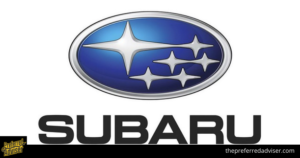Leaders often work tirelessly to improve their company’s product or service. They think that this is the most valuable role they can play. If you want your business to be successful, you need to keep your customers happy.
You should be just as familiar with customers’ needs and wants as you are with the features of your product or the details of your service.
A value proposition is a brief statement that summarizes why a customer should buy a product or use a service. It is often used in marketing and advertising to convince potential customers to purchase a product or service. This mantra indicates that the business is split into two parts, but it does not mention what those parts are.
This article provides tips on how to write a value proposition, as well as examples. This will help ensure that your customers are getting value from your product or service every day.
Value Proposition

A value proposition is a statement that outlines why a customer should choose your product or service over others. The clearest benefit that customers receive by giving you their business is communication.
The reason behind having a value proposition is to speak to a customer’s challenge and explain how your company can help solve the problem.
You should always focus on how customers define your value when creating a great value proposition, as this is what makes you stand out from competitors.
Even though a value proposition and brand strategy/taglines are related, they are not the same thing.
Why should you bother learning to write a value proposition? It’s like investing in the foundation of a house.
The foundation is the most important part of the house because it supports everything else and keeps the house safe.
Writing A Value Proposition
If you deliberately set out to create a value proposition, it can help to show the way ahead for your whole company.
If you try to make everyone happy in the beginning, it will weaken your purpose and no one will be happy with the results.
A small group of people (3 or less) who have the time to work on a few options is a better starting point than involving everyone.
find out how to write a value proposition in three different ways, including a complex mapping or a simple formula Begin with one, or attempt all three in a workshop to better develop your ideas.
1. Identify Your Customer’s Main Problem
If you want to create a strong value proposition, you’ll need to do some initial research. You can start by talking to various members of your team to get some ideas.
People who work in customer service, marketing, or sales can help you understand what problems your customers want to solve by using your product or service.
For example, if your business sells tax software on a subscription basis, automated templates may be included in the software package. An ideal customer for this product is someone who is looking for an affordable and user-friendly way to access complicated tax documents for their business.
Your business’s offerings can provide the solution they need.
2. Identify All The Benefits Your Products Offer

Make a list of all the products you sell and describe their primary benefit. The benefit should be brief and focused on a single customer need.
Our tax software provides a variety of templates to help customers with their taxes. Each template is designed to provide a specific benefit, and customers can choose the template that best suits their needs.
3. Describe What Makes These Benefits Valuable
Next, add another sentence that explains why this benefit matters to the customer.
The benefit of this technology would be that customers would have affordable tax documentation available to them through their email – something that would typically cost them thousands of dollars.
4. Connect This Value To Your Buyer’s Problem
Once you have identified the buyer’s problem, match it to the features of your product or service that would alleviate that problem. Do they align? If you want to make your product stand out from the competition, you need to refine your value proposition.
You will need to repeat the steps until you find a valid buyer need that your business offers a viable solution for.
There’re three templates we think do an excellent job of connecting value to buyer pain points:
5. Differentiate Yourself As The Preferred Provider Of This Value

Finally, polish your value proposition to make it unique. Do you offer any customer service offerings that your competitors don’t? Are there any other services that you offer that other companies charge for?
Differentiating your value proposition from your competitor’s while still focusing on the buyer’s needs can help set you apart. The following steps can easily be implemented into value proposition templates.
Value Proposition Templates
1. Map Out A Value Proposition Canvas
The value proposition canvas, created by Peter Thomson, explores different aspects of a company that create a strong value proposition.
This process can help team members get to a “minimum viable clarity,” which can be whittled down into a one-sentence value proposition, according to Thomson.
To Thomson, a value proposition is the key point where business strategy and brand strategy meet. He has created a model to ensure that the two strategies are working together.
When you examine each section of the canvas, do so from the perspective of the customer. Think about how your product can make someone’s life more enjoyable or easier. Write about how it can help them avoid pain or feel more pleasure.
To create a great customer experience, think about how the features of your product or service can make your customer’s life better. How does the product experience make a customer feel?
Then, you’ll look into the customer’s emotional drivers (wants), rational motivators (needs), and fears of undesired outcomes. Even though consumers may be making purchases or investments on behalf of a company, they may still be guided by their emotions.
When considering whether to purchase a product or service, it is important to understand how it will affect your perceived likelihood of failure, anxiety, or reputation at work.
The 30 “Elements of Value” from Bain & Company can be used as a guide to understanding how your company is providing value to customers within this context.
2. Ask Harvard Business School’s Essential Questions
In order to simplify the process of writing a value proposition, Harvard Business School’s Institute for Strategy & Competitiveness created three prompts. Just as Thomson does, Harvard argues that a value proposition serves as the connection between a company and its customers:
” The value chain looks at a company’s internal operations while the value proposition looks at customer needs and how the company can meet them. The word “strategy” is defined by Merriam-Webster as “a careful plan or method.” This particular strategy is one that integrates both the demand and the supply, two key components that must work together in order for stability within a market.
To create an integrated, cohesive value proposition, start by brainstorming as a group around these three questions:
- Which customers are you going to serve?
- Which needs are you going to meet?
- What is the acceptable price for customers that will also provide acceptable profitability for the company?
You should base your decision on which question to start with on your product and service. Each part of a value proposition triangle–a problem, a solution, and the result–works together to create a clear and concise statement.
As you go through the exercise, think about which leg is the main one. Do you offer the greatest value in cost savings? Are you selling a better product or experience for a higher price?
Also, think about whether your company is expanding the market by introducing a new product or service that meets a need that hasn’t been realized yet. Harvard’s experts use a great example — the iPad. Before Apple released its technology, there was no demand for it.
3. Try The Steve Blank Formula To Distill Your Insights
Many startup founders try to create a value proposition by emphasizing features instead of benefits. This was noticed by Steve Blank, who used to work for Google and now runs the Lean Startup Circle.
Instead of focusing on how a company offers value to customers, leaders often get bogged down in the details. Blank saw that it was necessary to have a straightforward equation to convert a brainstorm into a normal sentence. We love distilling more detailed insights with his method:
We help (X) do (Y) by doing (Z).
Come up with your own value proposition by using Blank’s easy to use template. The first thing that comes to mind is usually the best. Your intuition may be right on this one, making this easy solution very valuable.
Here’s my value proposition for my copywriting business, for example:
I help marketing teams communicate more effectively with their target audiences.
Your local coffee shop may have a value proposition that’s similar to this one:
Our local customers can feel good and do good by fueling up with artisanal coffee in a community-focused space.
Each team member should brainstorm individually for this exercise. Afterward, you can compare and contrast answers to get insights about each person’s priorities.
You should use the same language that your customers use when you are creating your value proposition. This will ensure that they will be able to understand it and that it will be relevant to them. We use phrases like “emails slipping through the cracks” because that is how our customers describe the problem we help them solve.
If you want your customers to really understand your value proposition, you need to write it in a way that makes sense to them. otherwise, there will be a disconnect between what you say and what they hear. When you use their voice, you cut through the noise and are able to be heard.
Value Proposition Examples
1. HubSpot: “An Easy-To-Use CRM.”

Headline: “An easy-to-use CRM.”
Sub-headline/Paragraph
“HubSpot’s CRM platform has all the tools and integrations you need for marketing, sales, content management, and customer service.”
Visual Element
A CRM can be beneficial for most companies, even freelance businesses and small family-owned firms. Most systems are very complicated and hard to use. They are also very expensive.
HubSpot is targeting people who are using CRMs and are annoyed with how complicated they are, as well as people who are new to CRMs and find the options overwhelming.
The product is presented as being easy to use and helpful in coordinating different teams within a business.
The image of the smiling woman implies that the product is easy to use and will make the user happy.
2. FedEx: “Manage Your Home Deliveries”
Headline: “Manage Your Home Deliveries”
Sub-headline/Paragraph
Sending and receiving packages is convenient and safe for individuals who want to ship ideas and innovations across the globe. This allows for quick and easy shipping for people who need to send items internationally.
Visual Element
If you own a business and ship and package products, it can be a time-consuming, labor-intensive, and inconvenient process.
When you’re a consumer and you’ve missed a package delivery, you’ve probably had to drive to a shipping office to get it. There are two main problems that FedEx’s target customers have.
FedEx promises to make managing your deliveries easy, whether you are a business or a consumer.
3. LG: “State-Of-The-Art Living Experience”

Headline: “State-of-the-art Living Experience”
Sub-headline/Paragraph
LG SIGNATURE’s innovative product design creates an exceptional living experience for those who want to achieve a state-of-the-art living experience.
Visual Element
The type of home appliances you have can either make your life at home easy and hassle-free, or it can quickly cause problems with low power efficiency and outdated features.
LG targets customers who are willing to spend more on an appliance in exchange for a comfortable, hassle-free, and luxurious experience.
The imagery in the advert helps you to imagine what your life could be like if you were to purchase an LG appliance.
4. Subaru: “The Most Adventurous, Most Reliable, Safest, Best Subaru Outback Ever.”

The most adventurous, reliable, and safe Subaru Outback yet is now available. With superior handling and a variety of new features, this car is the best one yet.
Sub-headline/paragraph
The 2022 Subaru Outback is the perfect car for drivers who want to go on adventures. It is stylish and has the most advanced safety technology.
Visual element
Subaru is targeting customers who use its Outback SUVs for outdoor adventures. Outback’s value proposition is that it will help drivers safely and in style go off the road. The article states that there is a problem right in the headline.
I would know exactly what I am getting from that headline if I were a potential Subaru customer. The wording is the first thing potential buyers will see, so it is important to think about it.
5. Samsung: “Get Ready To Unfold Your World”

Headline: “Get Ready to Unfold Your World”
Sub-headline/paragraph
This is a premium, durable 5G smartphone that has everything you could want. The screen was revealed to be enormous, so you can now watch, work, and play better than ever.
Visual element
Samsung targets its most tech savvy segment by making a phone that can fold into a mini tablet.
This product provides a solution to a problem that many customers have: feeling like they need both a tablet and a mobile device is unnecessary. With this product, they can have the best of both worlds.
Samsung’s selling point for its foldable mobile device is that it is smart, well-aimed, and visually appealing.
Way To Go For A Remarkable Value Proposition
There are only a few factors that influence a potential customer to become a loyal customer.
Your industry’s ability to differentiate will help you understand your ideal customer and position your business to meet their needs.
The following tips can help you create a strong, unique value proposition:
-Develop a clear understanding of your target market and what they value.
-Think about what makes your product or service unique and how it can benefit your target market.
-Create a simple and clear statement that articulates your value proposition.
-Use specific examples and data to support your value proposition.

0 comments